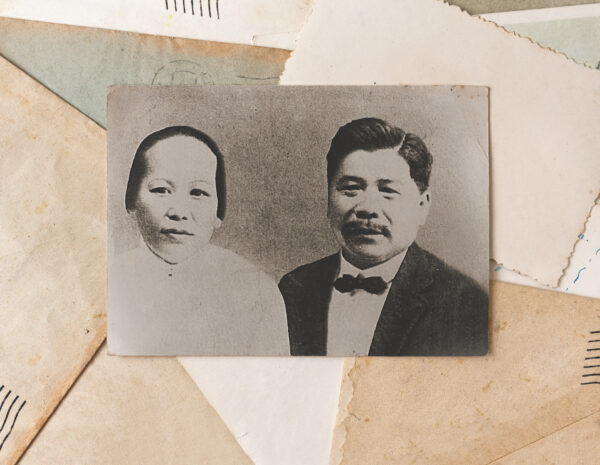The following article is drawn from two entries by the same author in the Encyclopedia of Seventh-day Adventists. Visit encyclopedia.adventist.org to read the original stories on Ang Tau Kiet and J. N. Anderson.—Editors.
Zijie Hong (洪子杰), also known as Ang Tau Kiet, was the second indigenous Chinese Seventh-day Adventist minister ordained in China. He pioneered Adventism in the southeastern Chinese regions of Guangdong and Fujian.
Hong was born in 1864 in Baita district, Liaoyang City, China. Before his conversion to Christianity, he was a county official near Shantou, Guangdong province. When he joined the Baptist Church, he became an ordained elder in charge of an independent congregation in the town of Chiao-on in eastern Guangdong.1
One day Hong met a man named Guo Ziying and through their conversation became interested in the Adventist message. According to Hong’s family,2 Guo had learned about the Sabbath from Timothy Zheng, an Adventist from Singapore. Wanting to understand more about the Sabbath, Guo traveled by boat to consult with Jacob Nelson Anderson, an Adventist missionary.
A Brief Background
When J. N. Andrews left for Europe in 1874, the Seventh-day Adventist Church began actively calling for those willing to leave the familiarity and comforts of home to serve abroad. Anderson and his wife, Emma, responded to that appeal. In April 1901, after an interview with the Foreign Mission Board, the General Conference appointed the Andersons as the first commissioned missionaries to China.
Early in 1903, the Andersons were invited to visit Eric Pilquist in Henan, central China. Pilquist was a worker at the British and Foreign Bible Society. He had accepted the Adventist message in India and actively promoted his faith in Henan. As a result, on February 14, 1903, Anderson conducted the first baptism of six Chinese converts to the Adventist faith. The next day these six were organized into the first Seventh-day Adventist church in mainland China.
During this trip Anderson was so moved by China’s great need that he wrote a letter of appeal to the Adventist Mission Board. The letter was read to the delegates by the secretary of the General Conference, W. A. Spicer, at the 1903 General Conference Session.
Consequently, four doctors and two nurses arrived late in 1903 to join the Pilquists in central China. By the end of that year, there were 12 foreign missionaries working in different parts of China, and the Adventist Church became well established.
Accepting the Truth
When his boat stopped at Shantou, Guo went ashore to have a look around. It was there he met Hong, and they began discussing the Sabbath. Hong was not interested initially. As a Baptist, he had been taught that Sunday was the Sabbath and believed he could prove it from the Bible. To his surprise, he could not find any biblical reference to Sunday being the Sabbath, nor could his Baptist mentor.
After some research, Hong accepted that Saturday is indeed the Sabbath mentioned in the Bible. Resigning from his county post, he began observing the Sabbath. It was not an easy decision to give up a good income, and only three of his six children followed him from their Baptist faith.
When he announced his decision to his Baptist congregation, many of them joined Hong in accepting the Sabbath. Interestingly, the day on which they made that decision fell on Chinese New Year, which happened to be a Saturday that year.3 Their church building became the first property owned by the Shantou Mission of Seventh-day Adventists.4
In addition to giving up his lucrative county position, Hong also sold many of his properties, distributing part of the proceeds to the poor and using the remainder to build a school. An enthusiastic leader, he began to spread the Adventist message in that part of Guangdong province. Friendly, sincere, and generous, he won many to Christ.
He opened new mission stations, distributed printed literature, and even employed others to preach the gospel at his own expense before the Seventh-day Adventist mission provided financial aid for his work. For about 25 years he opened schools and established churches in seven of the 12 districts in the Shantou Mission.
Hong and Gou labored together to start a new mission station at Kityang.5 In 1915 Hong was ordained into the Seventh-day Adventist ministry, becoming the second Chinese national to be ordained, after Gou.6 In addition to being an evangelist, Hong also served as the treasurer in the Shantou Mission of Seventh-day Adventists for a number of years.7
In 1928 Hong’s health began to fail, and he became paralyzed on his right side. Hong died in 1936 and was buried in his native village of Baita.8
1 “Ang, Tau Kiet,” Seventh-day Adventist Encyclopedia, second rev. ed. (Hagerstown, Md.: Review and Herald Pub. Assn., 1996), vol. 10, p. 83.
2 “Ang Tau Kiet,” in Chinese SDA History, ed. Samuel Young (Hong Kong: Chinese Union Mission of Seventh-day Adventists, 2002), p. 513; oral testimonies from Chen Hong Zhengqing and Ni Chen Lelian, Hong Jizie’s daughter and granddaughter, respectively.
3 Bruce Lo, “Ang Tau Kiet,” in Adventism in China, www.adventisminchina.org/individual-name/nationals/angtaukiet, accessed June 15, 2016.
4 “Ang, Tau Kiet,” Seventh-day Adventist Encyclopedia.
5 K. T. Khng, “The Spirit of the Pioneers,” The China Division Reporter, Mar. 1, 1931.
6 “Ang, Tau Kiet,” Seventh-day Adventist Encyclopedia.
7 “Ang Tau Kiet,”in Chinese SDA History.
8 “Ang, Tau Kiet,” Seventh-day Adventist Encyclopedia.



